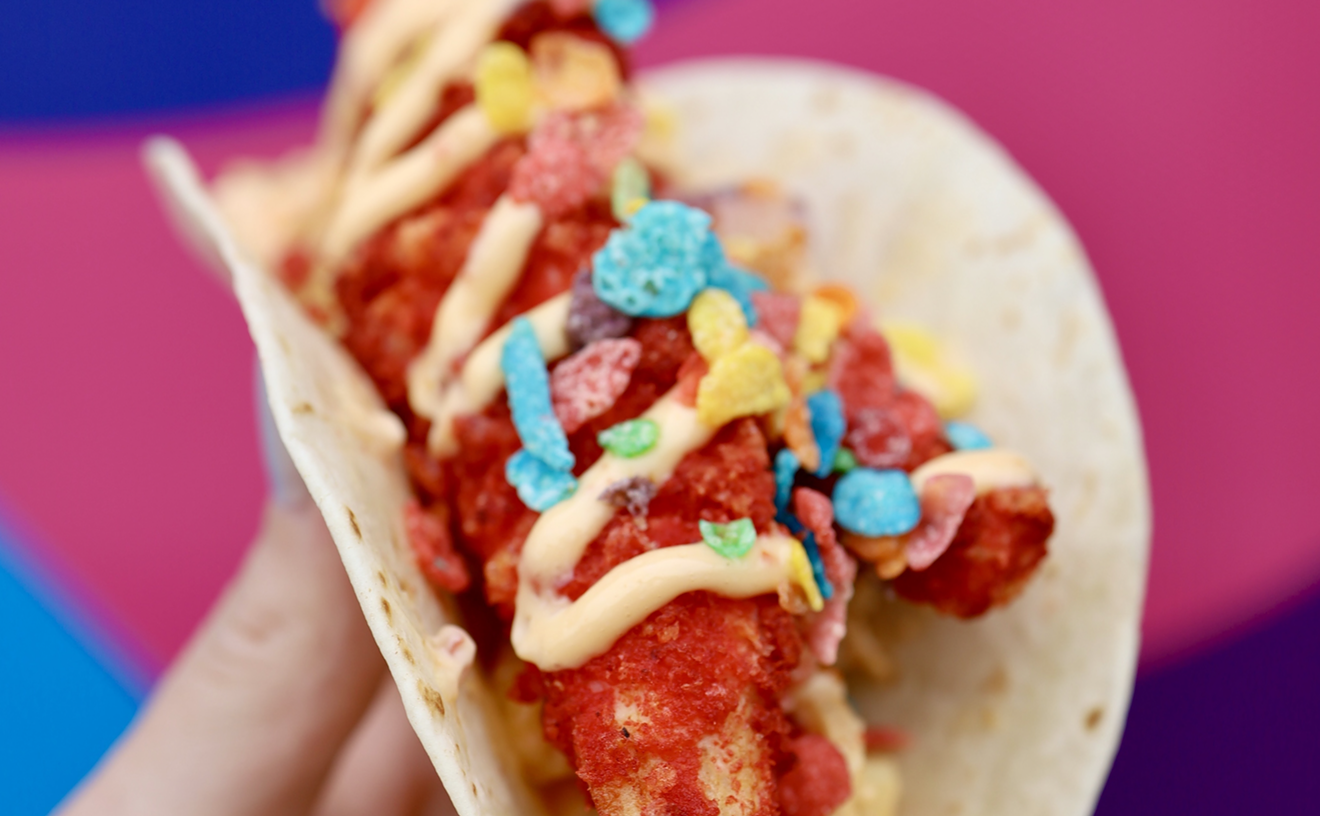Actually the well-heeled, mostly Latin clientele that gathers here isn't that old. While some dance, others prefer grabbing a seat at the long, swank bar and engaging in intelligent conversation. Or at least intelligible conversation, which is more than can be said for the acoustically deafening clubs up the street. The music, a mix of contemporary and traditional Cuban, begins at 8:00 p.m. and continues till around 1:00 a.m. on Wednesdays through Saturdays, at which point house music takes over. The bar stays open until the last bodies exit or 4:00 a.m., whichever comes first. It's usually 4:00.
The interior is tasteful and sophisticated: huge mirrors and black banquettes lining a subdued-gray wall to the left, a black mirrored bar dominating the right. The musicians set up beyond the bar, and more tables are scattered past them, at the back of the room. It is a clean, dimly lit place, too refined to have interested Ernest Hemingway, though he might have moseyed on over just to sample the mojitos made by bartender Vito Decandia, who diligently grinds sugar and fresh mint with a wooden pestle that resembles a teeny baseball bat, then adds rum, lime juice, and splash of soda water. After overhearing him boast about how Travel & Leisure magazine named Bolero's mojito "the best on the East Coast," I questioned whether Miami was the only place on the East Coast that even made the drink. He seemed a bit deflated but perked up again when I admitted it was indeed a mean mojito. Vito happens to be an all-around artful bartender. The waitstaff is slightly less skilled, though amicable and accommodating. Bolero, it must be said, has a good vibe.
It also has pretty good food. Chef Gemma Angulo is a veteran of haute-hotel kitchens, having previously worked at the Grand Bay, the Biltmore, and the Tides. The two soups, six appetizers, nine entrées, and four desserts are mostly nuevo cubano or Caribbean in nature, with a couple of Asian ingredients woven in. Don't know why they didn't just stick to Cuban, nuevo or otherwise, which would seem to make more sense in terms of integrating the food and music. Then again Bolero doesn't seem all that interested in unifying the two, for while the Latin beat isn't earsplitting, it is loud in the context of background music for dining; the cuisine clearly is secondary to the scene. Still, as I say, it isn't bad. The sweet and spicy coconut soup (six dollars) with shrimp, mussels, and tender bay scallops, was absolutely delicious. A grilled quail appetizer (nine dollars) was excellent as well, the succulent little bird marinated with zests of various citrus, which provides an acidic counterpoint to the charred, pleasantly carbonaceous taste. A single seared crabcake (ten dollars), squirted with mustard and chipotle sauces, was pleasing to the eye and disappointing to the palate.
The problem with such Jackson Pollack-esque presentations is that some bites contain too much sauce, others not enough. The cake itself, served on a bed of greens with chunks of ripe avocado and thin matchsticks of deep-fried taro, was moist and flavorful, though it possessed more filler than crab. The rest of the well-rounded starters include bacalao fritters in tomato-cilantro sauce; smoked salmon with lemon, capers, oven-dried tomatoes, and red-wine reduction; and plantain-crusted goat cheese with jicama and watercress salad.
Entrées were uneven. We loved the two rectangles of grilled tuna served Popsicle style on spears of sugar cane ($21), the outsides seared and caramelized, the inside softly straddling the line between raw and rare. The mound of soba noodles underneath, though, were tossed in a thick, dark, soy-based sauce that none of us cared for. A generous dome of shredded mambo pork ($18) came heaped atop what must have been, at one time, a crisp yuca cake -- that would be before it was placed in a pool of black bean sauce and weighed down by the pile of tasty but dry meat. This particular dish had been recommended to me by a friend who had eaten here, so perhaps the parched nature of the pork was an aberration. Paella Bolero ($24), on the other hand, was steamy and wet, the short-grain rice simmered with just the right amount of saffron and liquid. Pieces of shrimp, calamari, and whitefish, along with mussels in their shells, were deftly prepared, but the lobster tail that lay across the top was tough. One of the appealing aspects of paella is the way the chicken, sausage, and sometimes peppers or other vegetables play off the saffron and seafood. These ingredients are considered optional in Cuban-style paella, so I can't really hold it against Bolero for omitting them, but after a while this fish-only rice dish became monotonous to eat.
Smoked duck breast with tamarind-balsamic reduction, roasted rack of lamb with port cherry sauce, pan-seared Florida snapper with sweet plantain mash, and chicken breast over chorizo-cornbread stuffing also are offered as main courses. This last dish only makes the pallid paella that much more puzzling: They have the chicken and chorizo on hand! Speaking of chickens, when Fidel Castro visited the United Nations in 1960, he brought along his own live poultry for dinner. It has never been determined whether he was afraid of being poisoned by the United States Government or Perdue.
In pre-Castro Cuba sugar production was so vital to the island's economy that it was considered patriotic to consume it in large doses. While heaping teaspoon after teaspoon of sugar into their café cubanos, people would declare: "Dos para mí y tres para Cuba."("Two for me, three for Cuba.") Bolero's desserts are evidently prepared in this spirit -- they're sweet. They also share something else in common: vanilla. Spicy pineapple in Bacardi rum sauce and chocolate macadamia tart get served with vanilla ice cream; guava cheesecake and coconut flan are pooled with crème anglaise (all seven dollars).
Expectations play an important role in how we perceive places. You may feel let down if you head to Bolero expecting a great meal and a nice time, but if you go there to have a great time, and, if you're hungry, a nice meal, you won't be disappointed.











